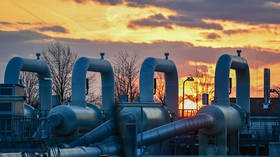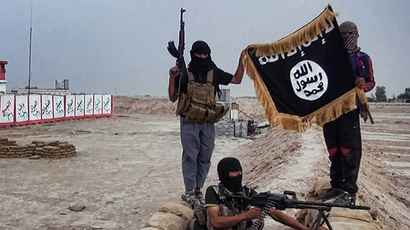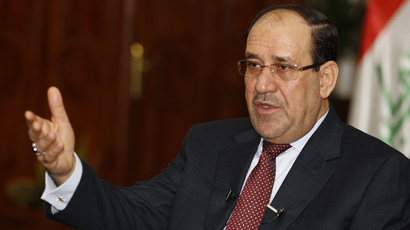‘World’s most dangerous’: Iraq’s retaken Mosul Dam could cause 500,000 deaths in days
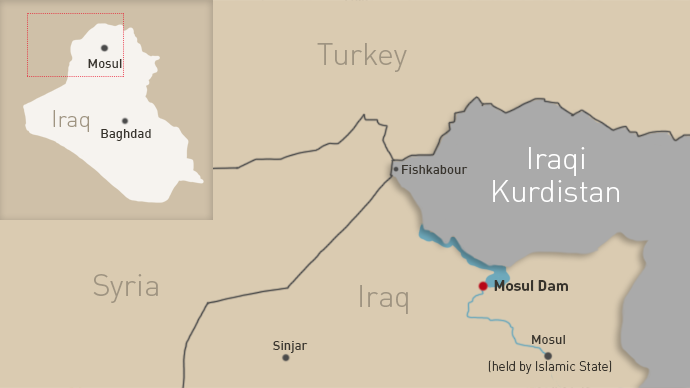
Reports indicate that Kurdish and Iraqi forces have all but taken back the key Mosul Dam from Islamic State militants. However it is rigged with explosives which, together with other issues, could lead to hundreds of thousands killed in just days.
Two major problems are the deliberate setting of booby traps by the militants, who took the dam in early August, and the already extremely dangerous, under-maintained state of the Tigris River dam itself.
The dam, the largest in Iraq, could be used as “a weapon of mass destruction,” experts have warned, alluding to its capacity to hold back 11-12 billion cubic meters of water, as well as to produce 1,000 megawatts of electricity.
In essence, the dam can either deprive half a million people of energy and water, or simply drown them.
A 2006 US Army Corps of Engineers report obtained by the Washington Post said the dam, which blocks the Tigris, could wipe out whole cities, and was considered to be "the most dangerous dam in the world."
Mosul would be wiped out, while Baghdad - 400km (250 miles) away – would be covered in four meters of water in a matter of days.
In the months the fighting was taking place, there were fears that an accidental airstrike or explosion might hit the dam, but the US operation to support its allies went on.
A total of 68 airstrikes have been carried out since August 8, 35 of which were in support of the Mosul Dam operation, as well as in order to “protect US personnel and facilities in Iraq.”
The operation, complete with fighter jets and drones, allowed an opportune moment of coordination between the Kurdish troops and Iraqi armed forces, in order to remove Islamic State militants from positions in and around the city of Mosul.
“We have pushed back the terrorists,” US President Obama announced at a press conference.
Islamic State militants denied that this is the case in an internet statement, calling it a “mere propaganda war.”
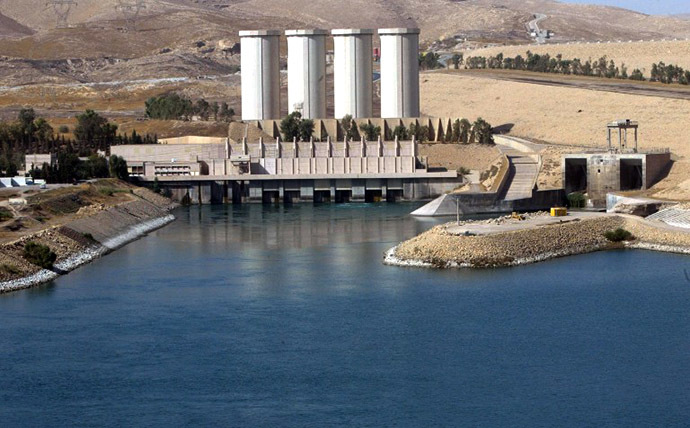
Not everyone is in a rush to report victory. And there are still pockets of militant resistance remaining further out as well.
"The jihadists have escaped from their positions beside the water pumps – the most important levers for the dam," said the spokesman for the Kurdish special forces, General Kawa Kawani. "But we cannot enter the area because of the explosives."
However, the danger to the population comes not only from a possible airstrike or a well-placed explosive.
The dam has been suffering a critical lack of maintenance and repair work. And under Islamic State management, a similar situation has been happening to other major dams located on the Euphrates (which still haven’t been freed).
The problem is that when it was built in the mid-‘80s, little thought was given to the location. David Petraeus, the former commanding general of the US Army, wrote a letter to Prime Minister Nouri al-Maliki in 2007, indicating the dangers of the soluble soil located underneath the dam, which warrant constant attention and repair work.
“Extraordinary engineering measures” to fill soil gaps and “maintain structural integrity and operating capability of the dam” are a must, according to the US Army Corps of Engineers (USACE) report sent out in the same year.
Another report by USACE in 2011 indicated that a failure of the Mosul dam could cost 500,000 civilian lives in the immediate aftermath.
The Iraqi government has also voiced alarm and in recent years was taking measures to fill the cavities caused by soil being washed out. It is now unclear whether the Islamic State was doing anything in this regard at all. If the cavities aren't refilled regularly, the fallout could be catastrophic.
No US or allied strategy has yet been discussed for the Haditha Dam – the second-largest dam on the Euphrates, also under militant control.



